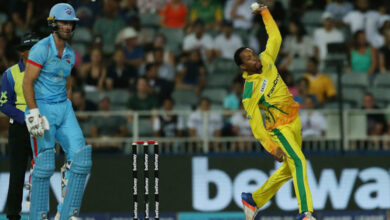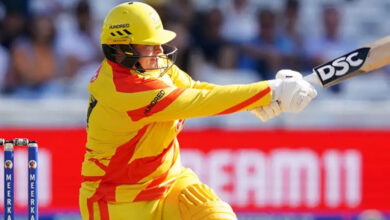Wide Rule Explained: Recent Change in Law Aids Virat Kohli Reach World Cup Century

In recent Cricket news Virat Kohli finally broke his long-standing century drought in World Cup matches, and a wide decision by Richard Kettleborough that raised eyebrows might have played a role in this feat. This intriguing incident occurred during the 42nd over of India’s chase against Bangladesh, with the game effectively decided. India needed just two runs to win, and Kohli was on the cusp of reaching a century, standing at 97.
Wide not call, aids Kohli to Century
In the end, Kohli achieved his century and sealed the victory with a six on the third ball of the over. However, what drew attention was a decision by the umpire that left many wondering. The first delivery, bowled by Nasum Ahmed, appeared to pass down the leg side, yet no wide was signaled.
Umpire Kettleborough had a smirk on his face as he refrained from calling it wide, and this decision led to some criticism. Nevertheless, it’s worth considering whether a recent change in the Laws of Cricket, implemented in 2022, played a role in this situation.
What is MCC Wide Rule?
Ironically, the law change introduced in 2022 was intended to favor bowlers but may have inadvertently assisted a batsman in this instance. Prior to the law change, Clause 22.1.1 in the MCC Laws of Cricket, which pertains to judging a wide, stated: “If the bowler bowls a ball, not being a No ball, the umpire shall adjudge it a Wide if, according to the definition in 22.1.2, the ball passes wide of where the striker is standing and which also would have passed wide of the striker standing in a normal guard position.”
The MCC announced a new Code of Laws, set to take effect from October 1, in March 2022, which affected Clause 22.1.
“In the modern game, batters are, more than ever, moving laterally around the crease before the ball is bowled,” read a statement from the MCC. “It was felt unfair that a delivery might be called ‘Wide’ if it passes where the batter had stood as the bowler entered his/her delivery stride.
“Therefore, Law 22.1 has been amended so that a Wide will apply to where the batter is standing, where the striker has stood at any point since the bowler began their run up, and which would also have passed wide of the striker in a normal batting position.”
A closer look at the non-wide delivery suggests that this change might have played a role. As the bowler commenced his run-up, Kohli was in an open stance, with his front foot positioned notably towards the leg side. However, he made a slight shuffle just as the ball was released. If the ball would have hit Kohli had he remained still, then the decision not to call it wide aligns with the rules.
Also read: IND VS NZ World Cup 2023: Preview, Playing 11, Prediction, Venue, FAQs
Thank you for reading,and for more latest sports updates keep following us..




